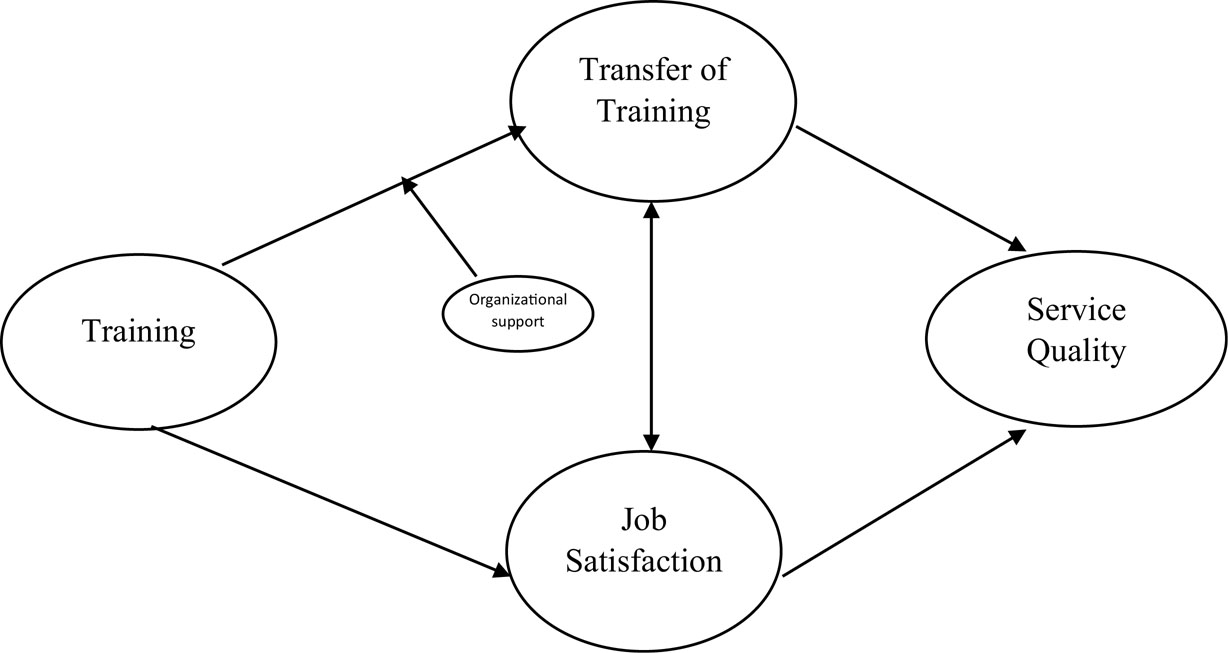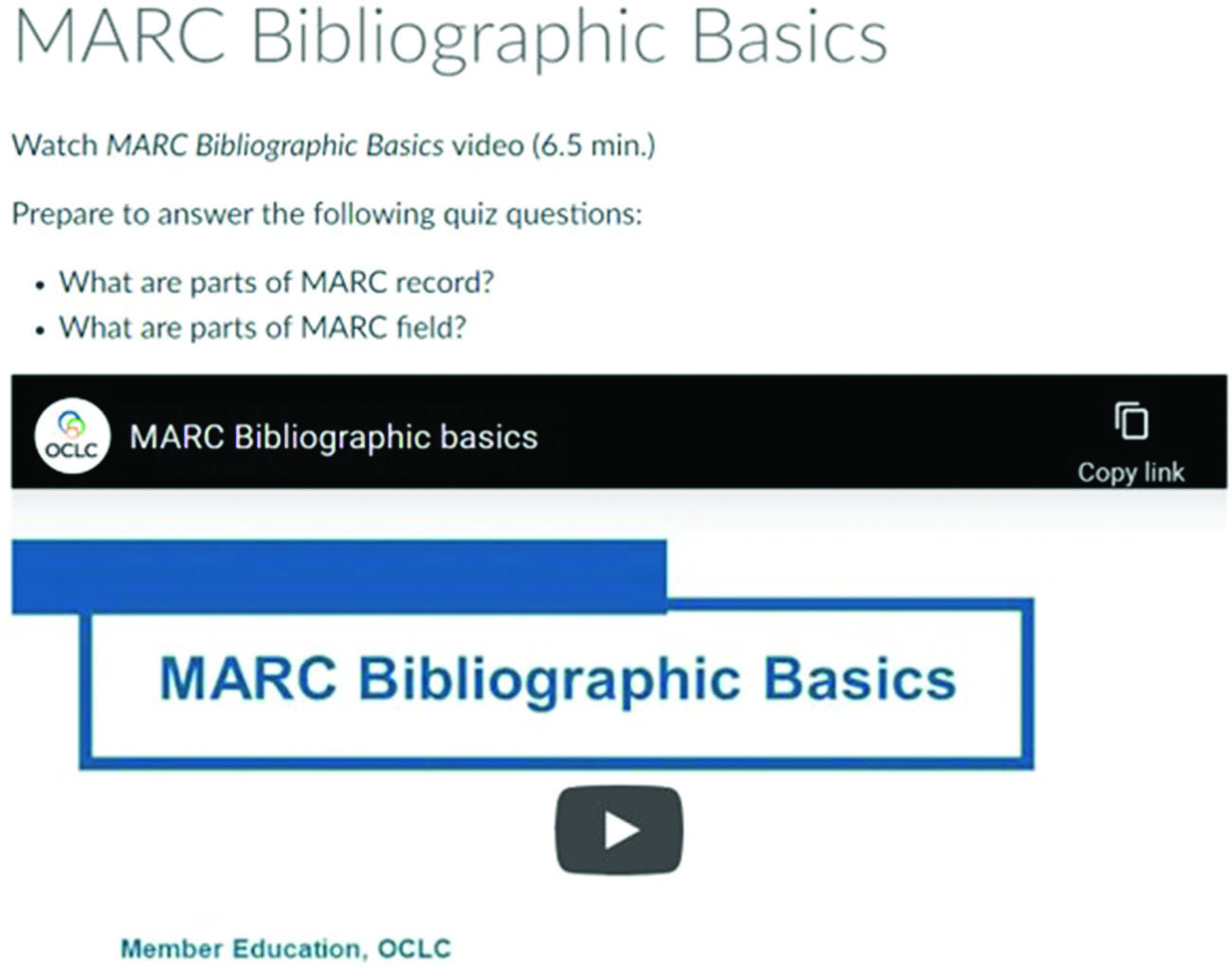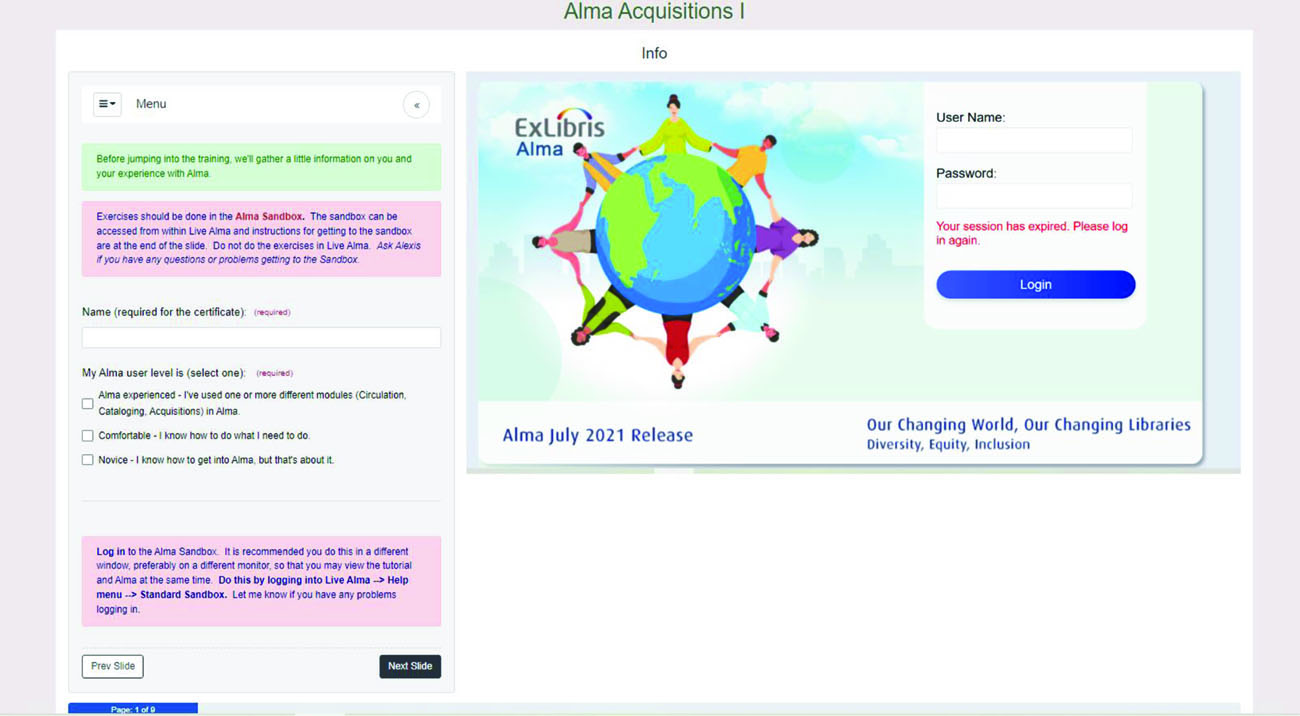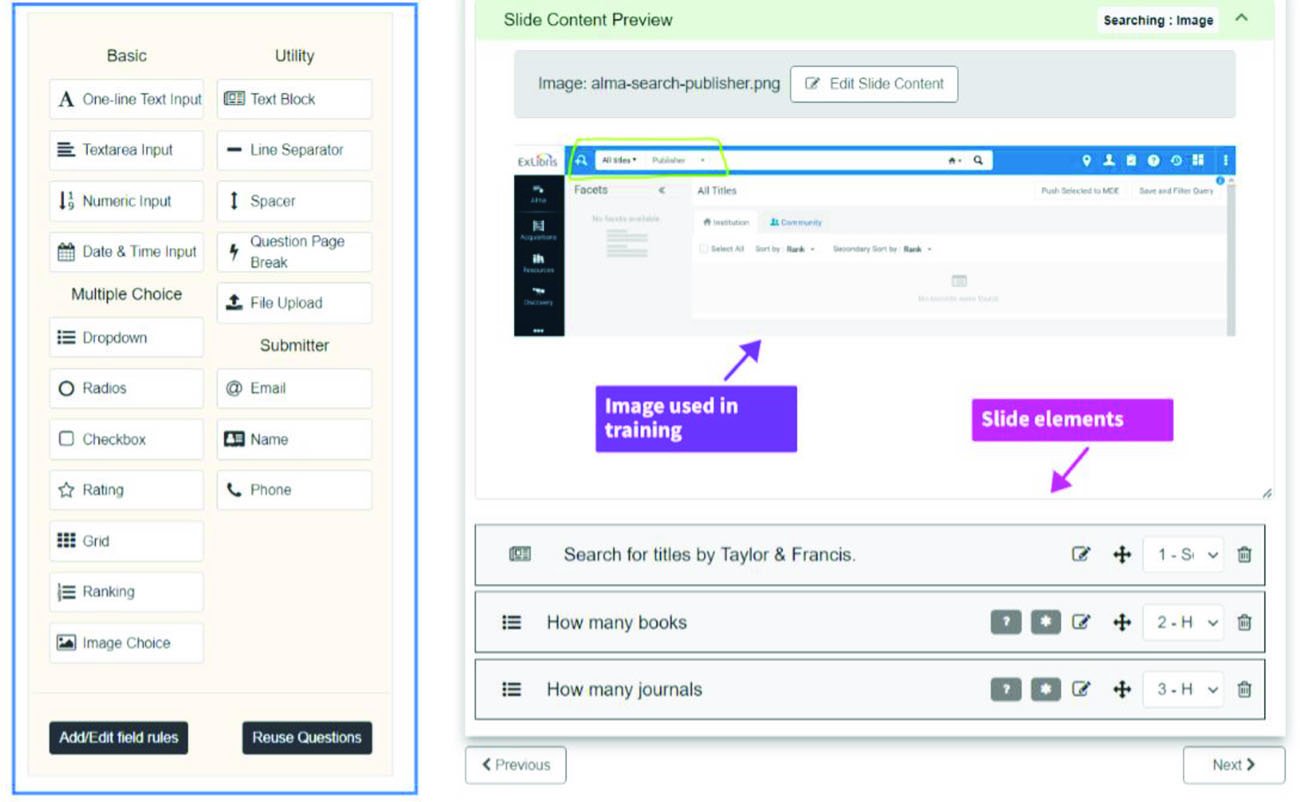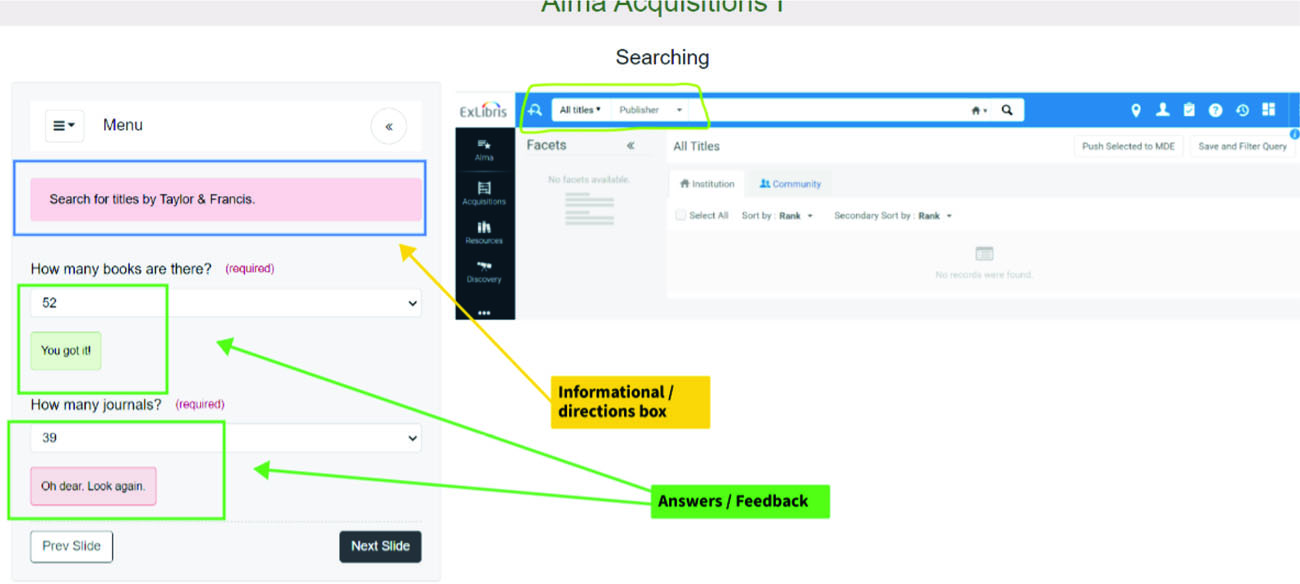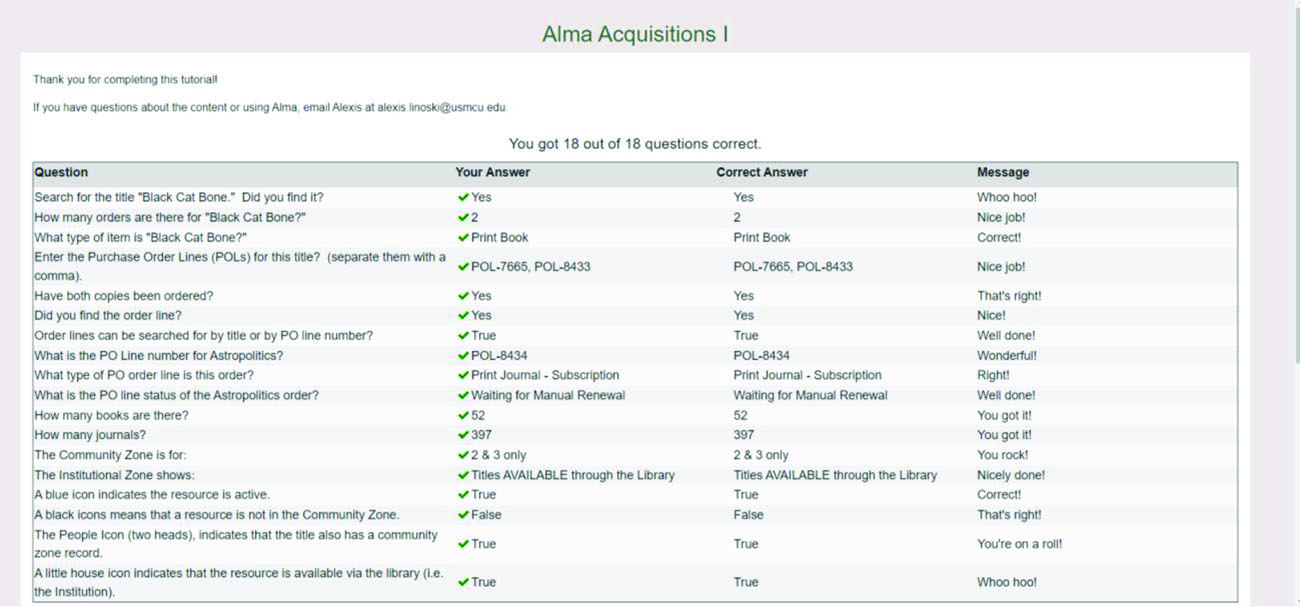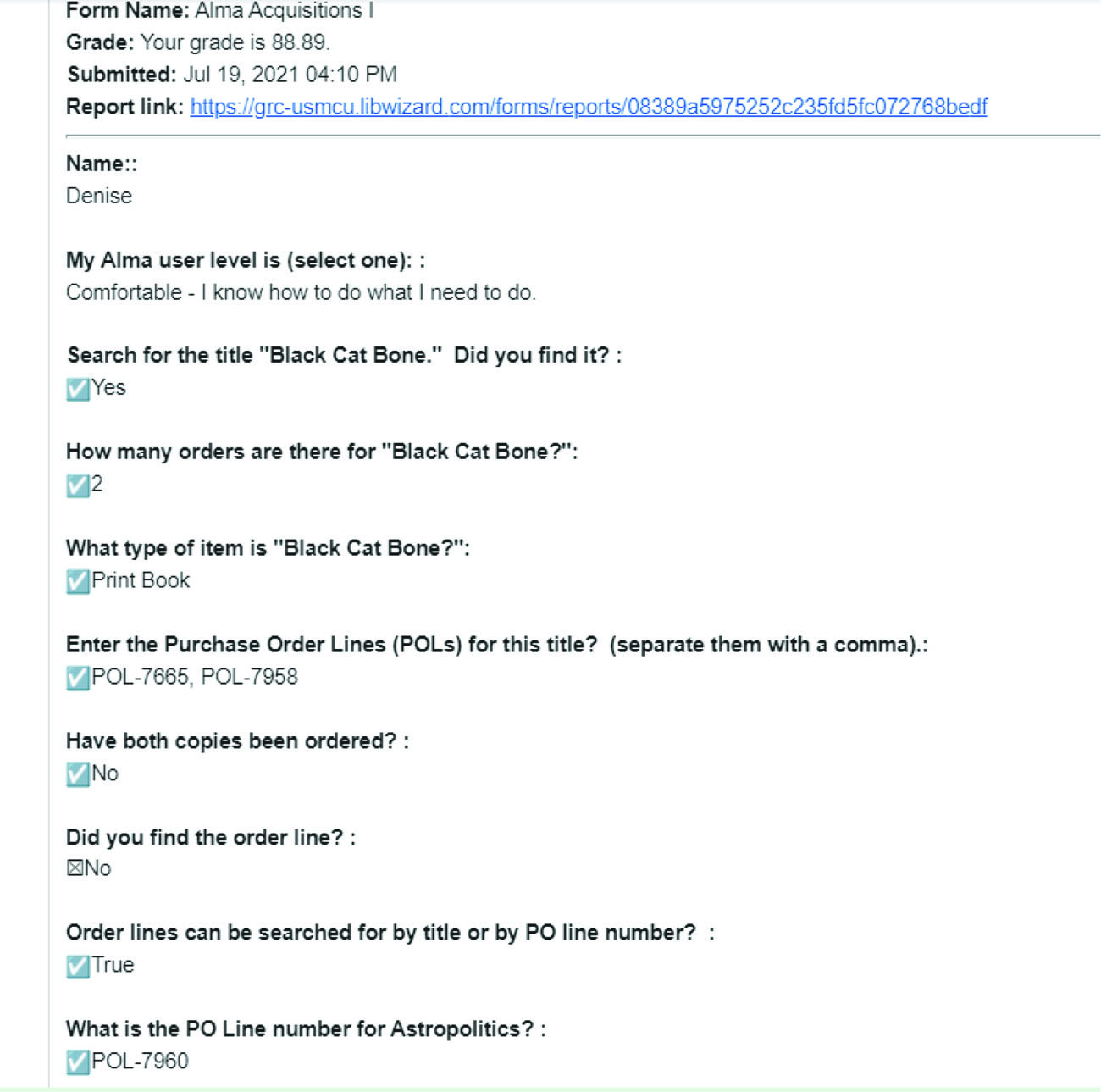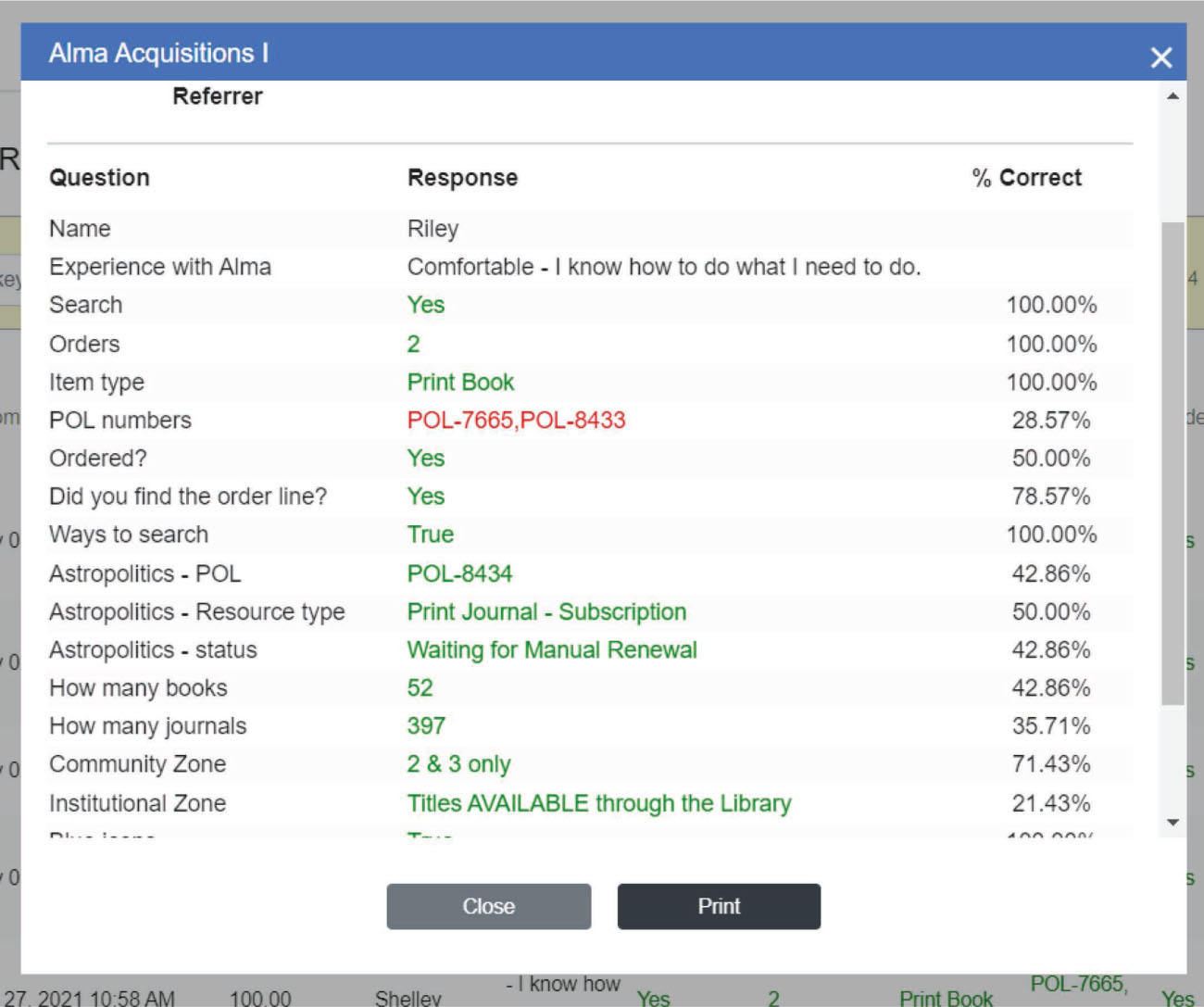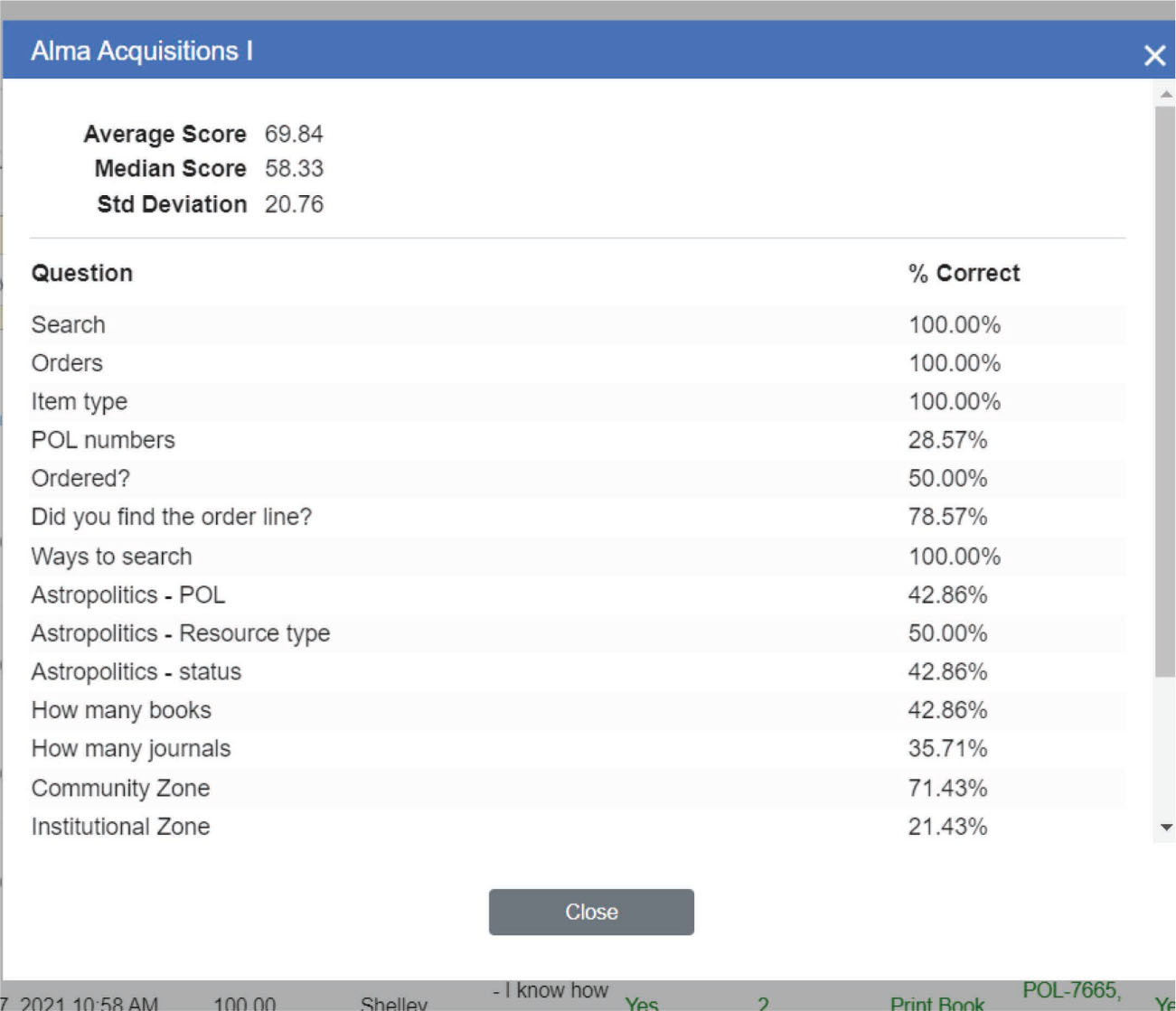Technical services departments are increasingly expected to do more with less, whether because of shrinking budgets, staff turnover, a lack of visibility, or insufficient understanding of their work on the part of administrators. Today’s increasingly complex library service platforms, changing cataloging rules, and diverse formats and delivery models demand that technical services professionals and paraprofessionals keep up with evolving technologies and best practices for the work they do. Finding a balance between meeting service demands and developing staff knowledge and skills is challenging, just as it is challenging to develop training programs and motivate staff to learn new skills.
Training, however, is important not just in terms of service quality, but organizational wellbeing as well. Research in fields of organizational psychology and human resource management points to a correlation between satisfaction with workplace training and overall job satisfaction, and between job satisfaction and employee retention.1 Figure 1 represents the conceptual model of successful training as it is described in organizational behavior literature.2
The link between training and service quality is well established, however, it is indirect. Service quality is improved only if the knowledge and skills learned are transferred to job performance (the transfer of training)3 and, with this enhanced knowledge, job satisfaction is improved. Organizational support is also crucial for success of the training. What is not shown in the figure but important to note is the manager’s increased well-being because of staff improved performance and increased job satisfaction.
Successful training cannot rely on a set of instructions, it must include elements of assessment to ensure knowledge and skills acquisition. The literature on the subject of using a learning-management system (LMS) and other online tools for staff training in libraries notes their potential for staff and managers. For staff these tools provide an online workspace to access anywhere, any time and at one’s own pace.4 Brigitte Bell indicates that training personnel using an LMS, “also offers library administration an effective way to outline goals and learning outcomes, as well as an easy means to track and evaluate their trainees’ progress.”5 In academic libraries, tools like LMS (Canvas, Moodle, D2L, etc.), Springshare quiz software, and others may already be available and can be adapted for technical services training.
This paper offers two different examples of using learning management tools for staff and student training in technical services. Despite many differences, both projects took a similar approach to organizing training:
Learning management tools already available in the library were used for technical services training;
Preference was given to in-house training;
Assessment was used to ensure knowledge acquisition and staff and students’ engagement with training.
Technical services training has many complexities. It is often multi-faceted and involves, in the case of cataloging, for example, training on cataloging software, cataloging rules and standards, and local policies. Many training opportunities are offered by the American Library Association Core Division, Library Juice Academy, Ex Libris, and other library service platform (LSP) providers, among others. However, outside training often incurs costs and cannot be easily customized to account for staff knowledge or local policies and workflows. Even though we developed our tutorials independently, our lists of elements required for successful in-house training were very similar. We seriously considered long-term sustainability of our tutorials and their adaptability for different groups and training scenarios. Building a tutorial is labor-intensive, accordingly it is important that it can be used over time with new generations of students and employees and in cross-training. The ease of tutorial software for the end-user is also an important requirement, as is the ability to deliver training online and asynchronously, if desired. When designing our training, we considered the following questions:
Is it easy to manage, adapt, use for different groups?
Can it be used long-term (for all new employers or for multiple cohorts of students)?
Can it be self-paced?
Does it allow for tracking progress?
Does it have elements that help retain the most essential information?
Emory University Robert W. Woodruff Library
Our first example is a training project at the Emory University Robert W. Woodruff Library. Emory University is a private research university in Atlanta, Georgia. It has two undergraduate colleges and seven graduate and professional schools. Emory has multiple libraries that operate independently and have their own technical services teams. All Emory libraries share a catalog and use the same library service platform (Ex Libris Alma). The cataloging training described in this paper was conducted at the Robert W. Woodruff Library Technical Services department. The Resource Description team has seven cataloging staff members and hires undergraduate and graduate students to help with organizing backlog and copy cataloging in European languages. Traditionally student training is conducted one-on-one and face-to-face. However, it is helpful if some of the training can be conducted asynchronously online and includes some accountability to help ensure that relevant information is retained. Though we started experimenting with online training during the pandemic, we are continuing this practice as it proved efficient. For the online component of the cataloging training, Emory’s LMS (Canvas) was used. Using Canvas was a logical choice since our students were already familiar with the interface and features. Students can be easily enrolled in the cataloging training module and can see it on their Canvas homepage along with their regular classes. Using the LMS assessment feature offers an easy way to track student progress. The Canvas LMS module design allows for information to be divided into manageable chunks and to create different sequences of modules depending on the training needs and level of knowledge required for a specific task. The training modules are based on the cataloging workflow steps used by the Woodruff Library Resource Description team.
Table 1 shows our workflow steps and who is involved in performing them.
Cataloging workflow steps by employment classification.
Searching, sorting, incorporating in the backlog |
Undergraduate students |
Basic copy cataloging in English and other European languages |
Graduate students |
Advanced copy cataloging in English and other European languages |
Graduate students |
Original cataloging |
Staff |
To search and sort materials in the appropriate backlogs successfully, students need to understand the structure of Machine-Readable Cataloging (MARC) records, know essential MARC fields, and be able to identify a correct record for an item in hand. To perform basic copy cataloging, they need to be comfortable using both the Online Computer Library Center (OCLC) Connexion and Alma Metadata Editor, know basic cataloging rules, and be familiar with OCLC Bibliographic Formats and Standards and other cataloging tools.
The training for each step can build on the knowledge acquired in the previous step. Students perform hands-on cataloging work to practice before moving to the next module to learn skills required for the next step. Rather than creating our own training videos, we used tutorials already available from OCLC, Ex Libris and the Association for Library Collections and Technical Services, which was merged with two other organizations to form Core, a division of the American Library Association. Table 2 lists the tutorials we require students to watch to learn progressively complex tasks.
Tutorials required for each workflow step
Step in workflow |
Tutorials |
|---|---|
Searching and sorting |
Basic Bibliographic Record (OCLC, 6.5 min.) Basic bibliographic searching (OCLC, 107 min.) Alma Essentials (ExLibris)
|
Copy cataloging |
Basic bibliographic searching (OCLC, 107 min.) Alma Essentials - Resource Management in Alma (ExLibris)
Cutter Numbers and Shelflisting for LC Classification (ALCTS, 60 min) |
Advanced copy cataloging |
Using the Library of Congress Classification P Schedule (ALCTS, 60 min) Introduction to LC Subject Headings, I (ALCTS, 60 min) Introduction to LC Subject Headings, II (ALCTS, 60 min) |
Watching some of the tutorials without prior cataloging experience can be overwhelming. To ensure that students select and retain essential information, each training module consists of one video tutorial followed by a quiz. The most important points to notice are listed in each module to help students pay attention to tools and options critical for our workflows. Figure 2 shows an example of the MARC Bibliographic Basics module that consists of an OCLC video and a three-question quiz.
Quizzes can be taken an unlimited number of times but require a score of one hundred percent to pass. Once the quiz is submitted, students can see what questions were answered incorrectly, but the correct answers are not displayed. The instructor can assign different modules to each student and track progress of each student enrolled in the course. This project is an example of using a combination of existing vendor tutorials and LMS functionality to create a sustainable student training program that can be used with students involved in different workflow steps and with new staff. The online Canvas class did not replace face-to-face, hands-on training, but helped trainees learn some basic cataloging rules and tools independently. The initial time and labor invested paid off by freeing some of the manager’s time spent training and ensuring quality cataloging.
Marine Corps University
Our second example deals with acquisitions training at the Marine Corps University Library and shows how the functionality of Springshare’s LibWizard product can be used for successful and engaging staff training.
The Marine Corps University has six schools, including the Command and Staff College, the Marine Corps War College, and the School of Advanced Warfighting. The university offers three master’s degrees and is accredited by the Southern Association of Colleges and Schools Commission on Colleges (SACSCOC). The library also supports enlisted education and several of the schools have distance programs in addition to the resident programs. The library has one acquisition staff member, who also has other duties, and one serials staff member. When the library migrated to Alma about two years ago, the acquisitions module was not implemented, nor had the acquisitions module been used in the previous integrated library system. Acquisition functions were being managed with spreadsheets; therefore, our implementation began with a clean slate in Alma.
In order to start managing acquisitions using Alma, staff needed to be trained, not only on using Alma Acquisitions, but also on the workflows associated with the use of the acquisitions module. Much like Emory, we broke the training into three parts. We started with vendor provided training, using the web tutorials and webinars from Ex Libris for instruction on Alma workflows and functionality. While those worked well, they are fairly basic and do not cover local workflows or processes. It was soon realized that training needed to include workflows specific to our library. Thus, the second component of our training is locally developed tutorials. The third component of our training is group training, which brings the technical services staff together to walk through our workflows and processes in Alma. As an added bonus, it also provides our staff an opportunity to see how their specific job fits into the overall acquisitions workflow—a key component of training.
The decision was made to use LibWizard, a Springshare product for creating tutorials and assessments. The focus of the tutorials is not only on the mechanics of the Alma Acquisitions module, but on translating the current paper-based processes to the Alma Acquisitions workflow. LibWizard was selected because it was an existing tool available to the library, therefore no additional cost was involved, it is interactive, the tutorials can include a variety of elements and question types, it can be graded, it has the functionality to provide feedback at the question level, and certificates can be generated. While certificates may not seem important, we are a military institution and a good deal of annual training is required, all of which generate a “certificate of completion.” From this perspective, and my staff’s perspective, certificates indicate the satisfactory completion of training.
LibWizard is a robust tool, yet easy to begin using. Even though it is fairly intuitive to use, it has a lot of functionality that is not readily apparent. For this reason, training is recommended, as well as simply exploring the product. Once the tutorial has been created and is ready for use, it can be accessed with a Uniform Resource Locator (URL) or it can be embedded in a web page. The basic components for the tutorial are a welcome screen, the tutorial slides, and the completion and certificate page. We use the welcome page to provide an overview of the tutorial as shown in figure 3.
A variety of content can be used when creating slides, including websites, images, and embedded media. One LibWizard feature I particularly like is the ability to run a website live in the tutorial. However, due to our security requirements, we were unable to have Alma open live in the tutorial, so we used screenshots. Instructions were provided on an informational slide advising users to open Alma in a separate window, preferably on a second screen. This information slide is also used to gather information for the certificate and includes a “fun” question or an informational about the user, such as their experience with Alma, as shown in figure 4.
When building the slides for use in the tutorial, there are two components: slide elements and slide content. The slide elements are the options for building the slide – question types, text boxes, formatting options, etc. The slide content is the text, questions, and images used in the slide. For this library, the goal of the tutorial is for the user to complete the exercises in Alma and then answer the questions. Therefore, when building the slides, only information needed to complete the exercises was provided in the image for that slide. Additional details for the exercises or questions were provided using text boxes. In figure 5, on the right side, the top shows the image from Alma and the bottom shows the specific content for this slide. This slide contains directions in a text box and two questions. The asterisk indicates the question is required, and the question mark indicates that the correct answer is required to move forward. This is a graded tutorial. In LibWizard, when grading tutorials, grading is only done based on the first answer. If a user answers incorrectly, even though they have to go back and pick the correct answer to move to the next slide, they still miss the question for purposes of grading.
Each question is configured individually, which can be time consuming, but it allows for a great deal of flexibility in the tutorial. Question configuration includes two main elements: Display Properties and Answer Properties. Display Properties include customizing the text (font, color, size, etc.), as well as designating whether the question is required and whether the right answer is required to move forward to the next slide. Our quiz questions are either multiple choice, generally with three choices, or true/false. Questions may also be sorted randomly, which is useful if participants are able to take the quiz multiple times, as they will not be able to memorize the answer because the order of the answers change each time the tutorial is taken.
Answer Properties is the tab where the correct answer is denoted and where responses to questions can be configured. There are two options when configuring responses: unique feedback for each potential answer and standard feedback for correct or incorrect answers, i.e., all incorrect answers receive the same response. Since feedback can be customized at the question level, feedback for answers can differ from question to question. As shown in figure 6, feedback on individual answers was used when training on specific workflow issues; most other questions simply used a standard reply for correct and incorrect answers.
The last part of creating the tutorial is the completion setup. It is here you designate whether or not a certificate will be issued. A sample certificate of completion is shown in figure 7. If a certificate is issued, a minimum passing score can be set and is recommended. For the initial, introductory training, we went with a minimum score of seventy. However, as the tutorials become more advanced and involve more specific workflow training, the minimum score will be raised.
An advantage to using a tutorials product like LibWizard is the ability to receive results when the tutorials are completed. With LibWizard, the results are sent to both the instructor and the user and are configured as part of the setup. As documented in figures 8 and 9, the results show questions answered correctly and incorrectly.
In addition, there is a separate reports function that allows for a variety of ways to run different reports for each tutorial created. This includes running reports by individual and viewing overall statistics as shown in figures 10 and 11. When training, it is not enough to simply create a tutorial and have staff complete it. It is necessary to look at the results to ensure that the training goals are being met. Reports help identify trends that can show areas where the training needs to be enhanced or where the tutorial needs to be modified to provide more specific training or clarify the questions themselves. Are there certain questions that everybody is missing? If so, is it a problem with understanding the concept or is it a problem with the way the question is presented? Maybe too much information is presented in a tutorial, and it should be broken out into multiple tutorials? Notice in Figure 11 that several questions have an overall percentage of correct answers of less than 50 percent. These are the areas to review to see why users are not getting the concepts. Not only was I able to review the results, but the users also asked me questions, which was encouraged, and I asked them questions after identifying trends in the tutorial results. This helped me gauge whether or not it was the tutorial design, or the concepts being taught.
This is our first foray in to using LibWizard for technical services training and in creating Alma training. We all learned. While tutorials are a good starting point, it should be remembered that the more a staff member does a task, the more familiar and comfortable with it they will become. Training should be done in tandem with or shortly before actual duties begin. This helps the user relate the training to the job, which is when true learning of the task happens.
We learned several lessons as we developed training at our respective institutions:
Make sure the tutorials are manageable. We did this by ensuring that single areas and functions were covered in a tutorial. Your initial desire may be to put everything in one tutorial, but that will more than likely be too much. Look for natural breaks in what you are training on and then develop the tutorials.
Design the training to mirror the live environment, if possible. We were unable to do this as our sandbox does not mirror our live environment. However, it is similar and when needed, information was provided in the tutorial to complete the exercises and to provide information on what might be different in our live Alma. When necessary, I told staff what values to use for certain elements.
Add a few fun questions. Questions were included at the beginning of the tutorial to gauge how comfortable they were with Alma, whether they were okay with the workflow, etc. Perhaps, get a little silly with the answers to these questions. In one instance, “I’d rather be herding llamas” was a potential response.
Make trickier questions bonus questions, which can be excluded from grading, or identify the question as a trick question so the user is aware that the answer might not be the obvious choice.
Most importantly, take the quiz yourself. This ensures that the result is what you want. If you, the creator, struggle with the tutorial, then odds are the staff will as well. When developing the tutorial, there are things you will miss that will not be obvious until you actually take the tutorial and see the results.
Contributor Notes
Alexis Linoski is Head of the Research Library Branch at the Marine Corps University, Quantico, Virginia.
Sofia Slutskaya is Head of Resource Description, Emory University, Woodruff Library, Atlanta, Georgia.
Notes
- Steven W. Schmidt, “The Relationship between Job Training and Job Satisfaction: A Review of Literature,” International Journal of Adult Vocational Education and Technology 1, no. 2 (2010): 19–28. ⮭
- Jie Shen and Chunyong Tang, “How Does Training Improve Customer Service Quality? The Roles of Transfer of Training and Job Satisfaction,” European Management Journal 36, no. 6 (2018): 708–716. ⮭
- Shen and Tang, “How Does Training,” 708. ⮭
- Brigitte Bell, “Training Academic Library Staff Using an Online Learning Management System (LMS).” The Bottom Line 29, no. 4 (2016): 237–240. ⮭
- Bell, “Training,” 239. ⮭

